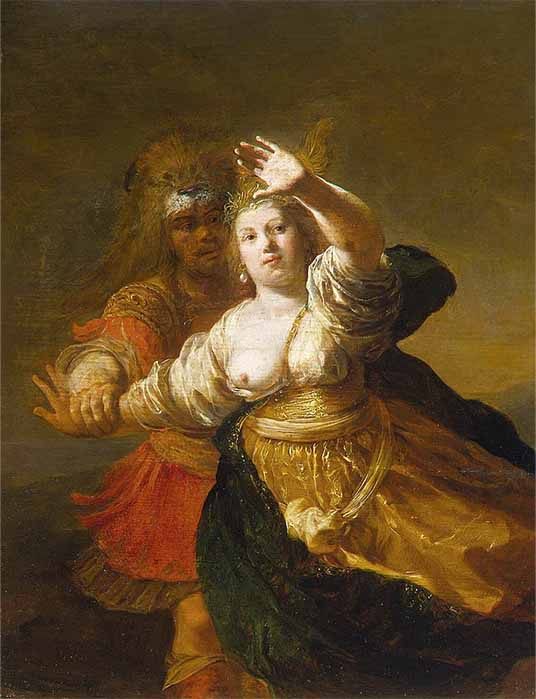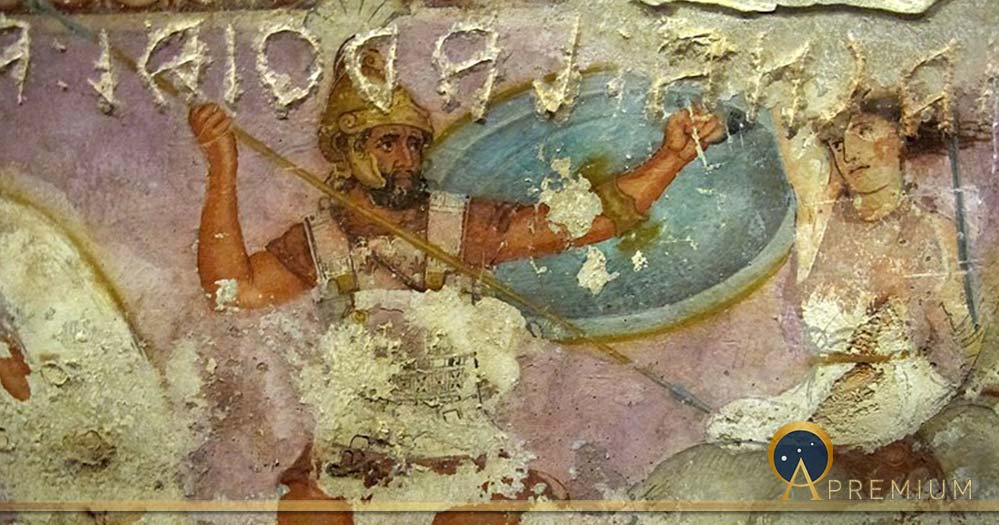Amazonomachy - Annihilation Of The Amazons
It was love at first sight when Achilles locked eyes with the famed Amazon warrior queen, Penthesilea. Romance, however, was the last thing on his mind. Alas, poor Penthesilea—Achilles would realize his love for her only after driving a bronze spearhead into her chest. Unquestionably, this mightiest of Greek heroes was felled once her helmet was lifted revealing Penthesilea’s savage beauty “undimmed by death.” The Aethiopis reports that Achilles suffered pangs of mourning as intense as those he felt from the loss of his beloved Patroclus. But Achilles was not alone among Greek heroes called to battle, falling for an Amazon.

Heracles Obtaining the Belt of Hyppolita by Nikolaus Knüpfer (17th century) Web Gallery of Art (Public Domain)
Combatting Amazons was a yardstick with which to measure the bravery of Greek heroes. During a vignette that sounds suspiciously like rape, in the ninth of his 12 labors, Heracles was forced to strip the magical “ war-belt” or girdle off the Amazon warrior-queen, Hippolyta. Unsurprisingly, it did not go well for the Amazon queen. Evidently unaware of his own brutish strength, the mighty Heracles, while attempting to disrobe Hippolyta, wound up killing her instead. Finally—according to one tradition—Theseus, the mythological first king of Athens, first battled and then married yet another Amazon queen, Antiope, who would become queen of Athens sparking a war between the Amazons and the Athenians, termed Amazonomachy (Amazon battle). Predictably, the Amazons were routed. In each of these tales, although defeated, the Amazon is treated honorably at the hands of a Greek hero; or in the case of Antiope, is treated no less than a Greek woman—about as much as the fairer sex can expect from an ancient Greek man.

Amazon in Scythian attire, Attic vase ( c. 420 BC) Staatliche Antikensammlungen, Munich (Public Domain)
Renowned for their courage and bravery against Greek heroes and gods alike—Amazons were a notorious force with which to be reckoned. In fact, their popularity even made them a subject in artwork and statuary adorning public, private, and sacred spaces across the Greek world. Their ferocious personas were often depicted sporting pants and hurling javelins from the seats of their attendant steeds. Perhaps the fame of the Amazons could be due, in part, to their being antithetical to everything the Greeks held dear in womanhood.
Like this Preview and want to read on? You can! JOIN US THERE ( with easy, instant access ) and see what you’re missing!! All Premium articles are available in full, with immediate access.
For the price of a cup of coffee, you get this and all the other great benefits at Ancient Origins Premium. And - each time you support AO Premium, you support independent thought and writing.
Mary Naples’ master’s thesis: “Demeter’s Daughter’s: How the Myth of the Captured Bride Helped Spur Feminine Consciousness in Ancient Greece,” examines how female participants found empowerment in a feminine fertility festival. Visit www.femminaclassica.com
Top Image: A Greek fighting an Amazon. Detail from painted sarcophagus found in Italy, 350-325 BC (Sailko/CC BY-SA 3.0)
By: Mary Naples


















